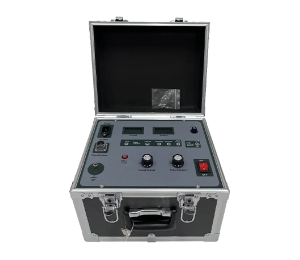TEL:
+86-0312-3189593
 English
English

Telephone:0312-3189593

Email:sales@oil-tester.com

-
 Afrikaans
Afrikaans -
 Albanian
Albanian -
 Amharic
Amharic -
 Arabic
Arabic -
 Armenian
Armenian -
 Azerbaijani
Azerbaijani -
 Basque
Basque -
 Belarusian
Belarusian -
 Bengali
Bengali -
 Bosnian
Bosnian -
 Bulgarian
Bulgarian -
 Catalan
Catalan -
 Cebuano
Cebuano -
 China
China -
 China (Taiwan)
China (Taiwan) -
 Corsican
Corsican -
 Croatian
Croatian -
 Czech
Czech -
 Danish
Danish -
 Dutch
Dutch -
 English
English -
 Esperanto
Esperanto -
 Estonian
Estonian -
 Finnish
Finnish -
 French
French -
 Frisian
Frisian -
 Galician
Galician -
 Georgian
Georgian -
 German
German -
 Greek
Greek -
 Gujarati
Gujarati -
 Haitian Creole
Haitian Creole -
 hausa
hausa -
 hawaiian
hawaiian -
 Hebrew
Hebrew -
 Hindi
Hindi -
 Miao
Miao -
 Hungarian
Hungarian -
 Icelandic
Icelandic -
 igbo
igbo -
 Indonesian
Indonesian -
 irish
irish -
 Italian
Italian -
 Japanese
Japanese -
 Javanese
Javanese -
 Kannada
Kannada -
 kazakh
kazakh -
 Khmer
Khmer -
 Rwandese
Rwandese -
 Korean
Korean -
 Kurdish
Kurdish -
 Kyrgyz
Kyrgyz -
 Lao
Lao -
 Latin
Latin -
 Latvian
Latvian -
 Lithuanian
Lithuanian -
 Luxembourgish
Luxembourgish -
 Macedonian
Macedonian -
 Malgashi
Malgashi -
 Malay
Malay -
 Malayalam
Malayalam -
 Maltese
Maltese -
 Maori
Maori -
 Marathi
Marathi -
 Mongolian
Mongolian -
 Myanmar
Myanmar -
 Nepali
Nepali -
 Norwegian
Norwegian -
 Norwegian
Norwegian -
 Occitan
Occitan -
 Pashto
Pashto -
 Persian
Persian -
 Polish
Polish -
 Portuguese
Portuguese -
 Punjabi
Punjabi -
 Romanian
Romanian -
 Russian
Russian -
 Samoan
Samoan -
 Scottish Gaelic
Scottish Gaelic -
 Serbian
Serbian -
 Sesotho
Sesotho -
 Shona
Shona -
 Sindhi
Sindhi -
 Sinhala
Sinhala -
 Slovak
Slovak -
 Slovenian
Slovenian -
 Somali
Somali -
 Spanish
Spanish -
 Sundanese
Sundanese -
 Swahili
Swahili -
 Swedish
Swedish -
 Tagalog
Tagalog -
 Tajik
Tajik -
 Tamil
Tamil -
 Tatar
Tatar -
 Telugu
Telugu -
 Thai
Thai -
 Turkish
Turkish -
 Turkmen
Turkmen -
 Ukrainian
Ukrainian -
 Urdu
Urdu -
 Uighur
Uighur -
 Uzbek
Uzbek -
 Vietnamese
Vietnamese -
 Welsh
Welsh -
 Bantu
Bantu -
 Yiddish
Yiddish -
 Yoruba
Yoruba -
 Zulu
Zulu
ఫిబ్ర . 11, 2025 14:15
Back to list
pt polarity test
The PT Polarity Test is an essential assessment tool that electricians and technicians utilize to ensure the safe and efficient operation of electrical systems. Drawing from both deep industry experience and scientific expertise, the significance of this test is multi-layered, and understanding it thoroughly can greatly improve both product quality and system reliability.
Furthermore, authoritative guidelines and standards back PT Polarity Testing, offering a robust framework for its application. Organizations such as the Institute of Electrical and Electronics Engineers (IEEE) and the International Electrotechnical Commission (IEC) provide detailed standards and best practice guidelines, ensuring that tests are conducted consistently and accurately worldwide. This not only standardizes the approach but also supports global interoperability of electrical products and systems, thus broadening market opportunities. In terms of trustworthiness, PT Polarity Testing stands as a pillar that reinforces the systems it assesses. Companies investing in regular testing build a reputation for reliability and safety, thus gaining the confidence of clients and regulatory bodies alike. It underscores a commitment to quality assurance, conveying a message of diligence to stakeholders who prioritize operational integrity. When integrated into comprehensive maintenance and safety protocols, PT Polarity Testing contributes significantly to enhancing system fortitude and operational excellence. It equips technicians with a pragmatic tool to uphold electrical standards, ensuring that both new installations and existing systems function as intended without unexpected failures. In conclusion, for those in the field of electrical engineering and systems maintenance, the PT Polarity Test represents more than just a procedural task; it’s a safeguard against the unknown, a testament to professional rigor, and an assurance of engineered excellence. As industries evolve and the demand for sustainable and resilient power solutions grows, the role of PT Polarity Testing in preserving electrical system health and reliability will undoubtedly remain indispensable.


Furthermore, authoritative guidelines and standards back PT Polarity Testing, offering a robust framework for its application. Organizations such as the Institute of Electrical and Electronics Engineers (IEEE) and the International Electrotechnical Commission (IEC) provide detailed standards and best practice guidelines, ensuring that tests are conducted consistently and accurately worldwide. This not only standardizes the approach but also supports global interoperability of electrical products and systems, thus broadening market opportunities. In terms of trustworthiness, PT Polarity Testing stands as a pillar that reinforces the systems it assesses. Companies investing in regular testing build a reputation for reliability and safety, thus gaining the confidence of clients and regulatory bodies alike. It underscores a commitment to quality assurance, conveying a message of diligence to stakeholders who prioritize operational integrity. When integrated into comprehensive maintenance and safety protocols, PT Polarity Testing contributes significantly to enhancing system fortitude and operational excellence. It equips technicians with a pragmatic tool to uphold electrical standards, ensuring that both new installations and existing systems function as intended without unexpected failures. In conclusion, for those in the field of electrical engineering and systems maintenance, the PT Polarity Test represents more than just a procedural task; it’s a safeguard against the unknown, a testament to professional rigor, and an assurance of engineered excellence. As industries evolve and the demand for sustainable and resilient power solutions grows, the role of PT Polarity Testing in preserving electrical system health and reliability will undoubtedly remain indispensable.
Previous:
Latest news
-
Testing Equipment Industry Sees Major Advancements in 2025: Smart & Precision Technologies Lead the WayNewsJun.06,2025
-
Applications of Direct Current Generators in Renewable Energy SystemsNewsJun.05,2025
-
Hipot Tester Calibration and Accuracy GuidelinesNewsJun.05,2025
-
Digital Circuit Breaker Analyzer Features and BenefitsNewsJun.05,2025
-
Benefits of Real-Time Power Quality Monitoring Devices for Industrial EfficiencyNewsJun.05,2025
-
Earth Fault Loop Testing in High-Rise Building Electrical SystemsNewsJun.05,2025



